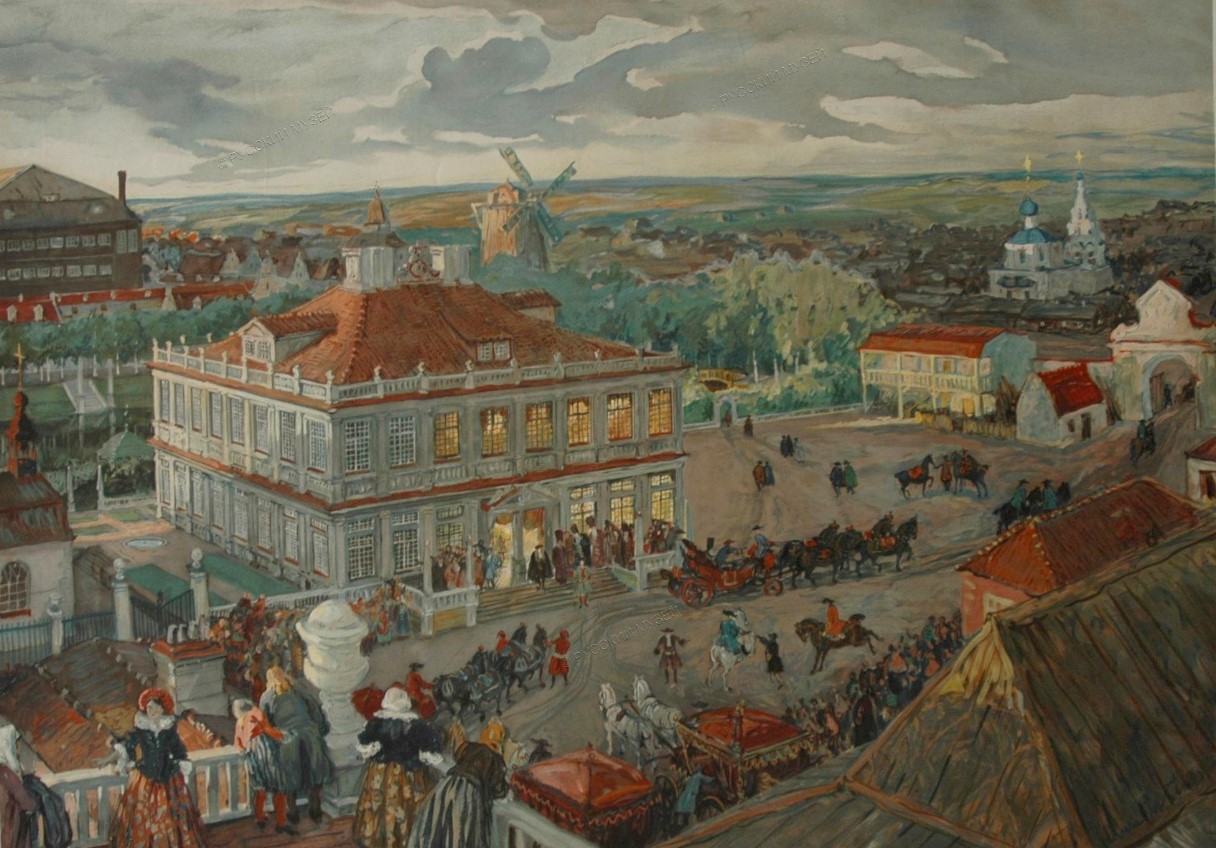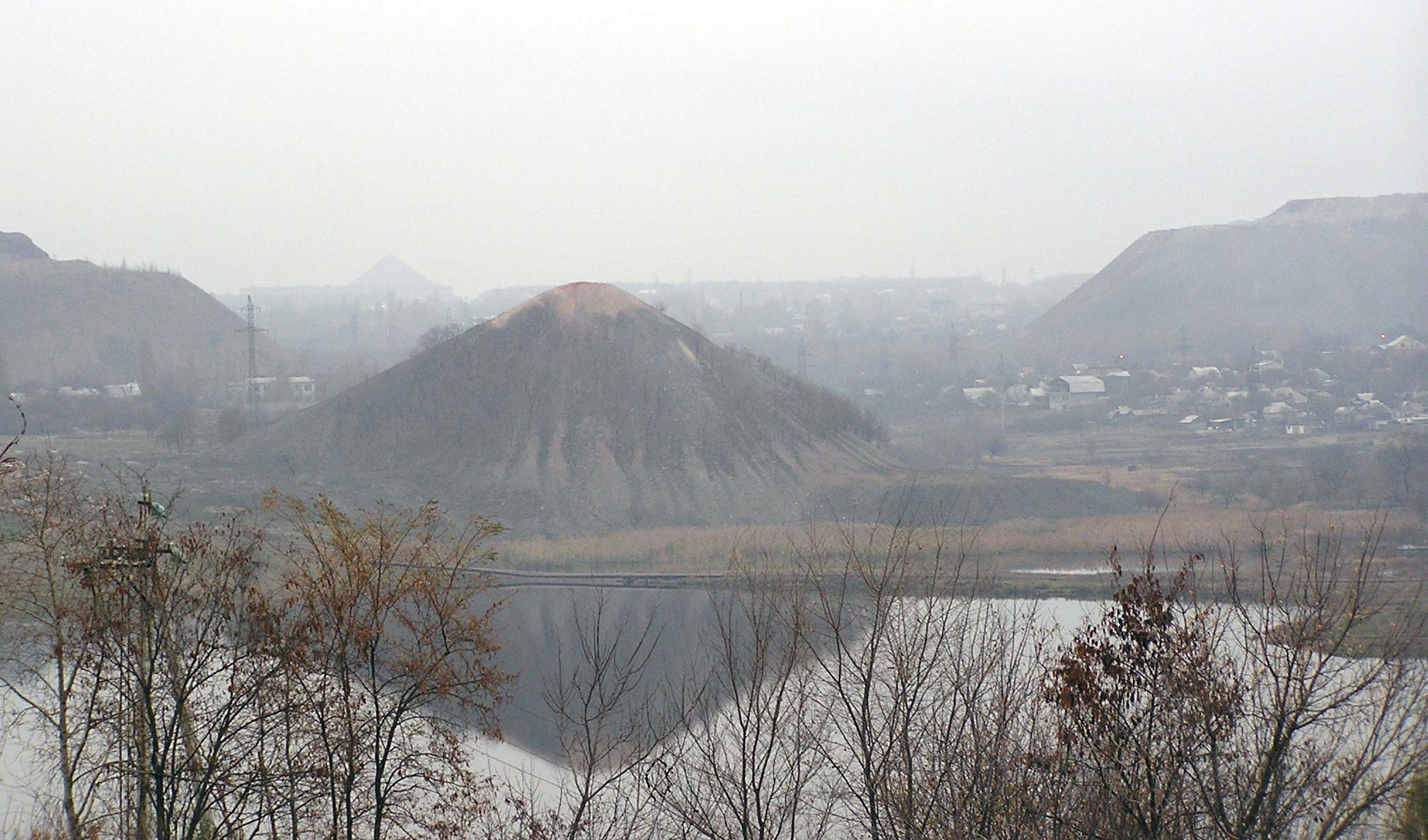|
Pokrovskoye, Rostov Oblast
Pokrovskoye (russian: Покровское) is a village, it is an administrative center of the Neklinovsky District of Rostov Oblast in Russia. It is also an administrative center of the rural population of Pokrovskoye. Its population is 12369 as of 2010. History It was founded in 1769. The first record about the community, where the village Pokrovskoye is placed now, was made in 1769. A Ukrainian historian Dmytro Yavornytsky (pen name: Evarnitsky) mentions in his “History of the Zaporozhian Cossacks:" Translation: In the year 1915 in Pokrovskoye existed 1410 yards, in the bylaw of the peasant citizens were standing 12400 dessiatins (approx. 136 km2) of land. Geography The village lies along the river Mius, 3 kilometers south-west to the railroad station Neklinovka. The distance to the city Taganrog adds up to 20 kilometers, to the city Rostov-on-Don it adds up to 65 kilometers. Economy Industry Milk factory, meat workshop, brick factory, agricultural enterpris ... [...More Info...] [...Related Items...] OR: [Wikipedia] [Google] [Baidu] |
Rostov Oblast
Rostov Oblast ( rus, Росто́вская о́бласть, r=Rostovskaya oblast, p=rɐˈstofskəjə ˈobləsʲtʲ) is a federal subject of Russia (an oblast), located in the Southern Federal District. The oblast has an area of and a population of 4,277,976 ( 2010 Census), making it the sixth most populous federal subject in Russia. Its administrative center is the city of Rostov-on-Don, which also became the administrative center of the Southern Federal District in 2002. Geography Rostov Oblast borders Ukraine (Donetsk and Luhansk Oblasts) and also Volgograd and Voronezh Oblasts in the north, Krasnodar and Stavropol Krais in the south, and the Republic of Kalmykia in the east. The Rostov oblast is located in the Pontic-Caspian steppe. It is directly north over the North Caucasus and west of the Yergeni hills.Google Earth It is within the Russian Southern Federal District. Rivers and lakes The Don River, one of Europe's longest rivers, flows through the oblast for part of ... [...More Info...] [...Related Items...] OR: [Wikipedia] [Google] [Baidu] |
Sloboda
A sloboda ( rus, слобода́, p=sləbɐˈda) was a kind of settlement in the history of the Old Russian regions Povolzhye, Central Russia, Belarus and Ukraine. The name is derived from the early Slavic word for "freedom" and may be loosely translated as "(tax-)free settlement"."Sloboda" '''' (1890–1906) In modern Russia, the term is used to denote a type of a rural locality in |
Khartsyzk :
* Ukrainians: 52.4%
* Russians: 44.1%
* Belarusians: 0.9%
* Armenians: 0.3%
* Greeks: 0.3%
* Georgians: 0.2%
Khartsyzk or Khartsyzsk (, ; rus, Харцызск, p=xɐrˈt͡sɨsk) is a city of regional significance in Ukraine. The city has a population of Population: History Starting Mid-April 2014 pro-Russian separatists took control of several towns in Donetsk Oblast. Unknown armed men took control of Khartsyzk city hall on 13 April 2014 and declared it part of the Donetsk People's Republic. A pro-Ukrainian unity rally, one of the few in the region, was held in the town on 22 April 2014. Demographics Ethnicity as of the 2001 Ukrainian Census The Ukrainian Census of 2001 is to date the only census of the population of independent Ukraine. It was conducted by the State Statistics Committee of Ukraine on 5 December 2001, twelve years after the last Soviet Union census in 1989. References [...More Info...] [...Related Items...] OR: [Wikipedia] [Google] [Baidu] |
Ilovaisk
Ilovaisk (, ; ) is a city in Khartsyzk municipality, Donetsk Oblast, Ukraine. The city is ''de facto'' under the military occupation of Russia and administered by the Donetsk People's Republic. The city is known as a major regional railroad hub. It was also the site of a battle in the conflict of 2014. The city has a population of , 17,620 (2001). Battle of Ilovaisk Starting in mid-April 2014, Russian paramilitaries captured several towns in Donetsk Oblast, including Ilovaisk. On 19 August 2014, Ukrainian forces reportedly secured the city centre from the Russia-backed militants; fighting for control of other parts of the town continued. The next morning they claimed they had control over one half of the town with the town divided by a railroad line. On 21 August, heavy fighting for control of the town (according to the Ukrainian Armed Forces "in some districts of Ilovaisk", while the Russia-backed forces claimed they had repelled the Ukrainian military and had surrounde ... [...More Info...] [...Related Items...] OR: [Wikipedia] [Google] [Baidu] |
Donetsk
Donetsk ( , ; uk, Донецьк, translit=Donets'k ; russian: Донецк ), formerly known as Aleksandrovka, Yuzivka (or Hughesovka), Stalin and Stalino (see also: Names of European cities in different languages (C–D), cities' alternative names), is an industrial city in eastern Ukraine located on the Kalmius River in Donetsk Oblast. The population was estimated at in the city core, with over 2 million in the metropolitan area (2011). According to the Ukrainian Census (2001), 2001 census, Donetsk was the fifth-largest city in Ukraine. Administratively, Donetsk has been the centre of Donetsk Oblast, while historically, it is the unofficial capital and largest city of the larger economic and cultural Donbas, Donets Basin (''Donbas'') region. Donetsk is adjacent to another major city, Makiivka, and along with other surrounding cities forms a major urban sprawl and conurbation in the region. Donetsk has been a major economic, industrial and scientific centre of Ukraine wit ... [...More Info...] [...Related Items...] OR: [Wikipedia] [Google] [Baidu] |
Rostov-on-Don
Rostov-on-Don ( rus, Ростов-на-Дону, r=Rostov-na-Donu, p=rɐˈstof nə dɐˈnu) is a port city and the administrative centre of Rostov Oblast and the Southern Federal District of Russia. It lies in the southeastern part of the East European Plain on the Don River (Russia), Don River, from the Sea of Azov, directly north of the North Caucasus. The southwestern suburbs of the city lie above the Don river delta. Rostov-on-Don has a population of over one million people, and is an important cultural centre of Southern Russia. History Early history From ancient times, the area around the mouth of the Don River has held cultural and commercial importance. Ancient indigenous inhabitants included the Scythians, Scythian and Sarmatians, Sarmatian tribes. It was the site of Tanais, colonies in antiquity, an ancient Greek colony, Gazaria (Genoese colonies), Fort Tana under the Genoa, Genoese, and Azov#Fortress of Azov, Fort Azak in the time of the Ottoman Empire. In 1749, a c ... [...More Info...] [...Related Items...] OR: [Wikipedia] [Google] [Baidu] |
Uyezd
An uezd (also spelled uyezd; rus, уе́зд, p=ʊˈjest), or povit in a Ukrainian context ( uk, повіт), or Kreis in Baltic-German context, was a type of administrative subdivision of the Grand Duchy of Moscow, the Russian Empire, and the early Russian SFSR, which was in use from the 13th century. For most of Russian history, uezds were a second-level administrative division. By sense, but not by etymology, ''uezd'' approximately corresponds to the English "county". General description Originally describing groups of several volosts, they formed around the most important cities. Uezds were ruled by the appointees ('' namestniki'') of a knyaz and, starting from the 17th century, by voyevodas. In 1708, an administrative reform was carried out by Peter the Great, dividing Russia into governorates. The subdivision into uyezds was abolished at that time but was reinstated in 1727, as a result of Catherine I's administrative reform. By the Soviet administrative reform of 1923 ... [...More Info...] [...Related Items...] OR: [Wikipedia] [Google] [Baidu] |
Taganrog
Taganrog ( rus, Таганрог, p=təɡɐnˈrok) is a port city in Rostov Oblast, Russia, on the north shore of the Taganrog Bay in the Sea of Azov, several kilometers west of the mouth of the Don River. Population: History of Taganrog The history of the city goes back to the late Bronze Age–early Iron Age (between the 20th and 10th centuries BC), when it was the earliest Greek settlement in the northwestern Black Sea Region and was mentioned by the Greek historian Herodotus as Emporion Kremnoi. In the 13th century, Pisan merchants founded a colony, Portus Pisanus, which was however short-lived. Taganrog was founded by Peter the Great on 12 September 1698. The first Russian Navy base, it hosted the Azov Flotilla of Catherine the Great (1770–1783), which subsequently became the Russian Black Sea Fleet. Taganrog was granted city status in 1775. By the end of the 18th century, Taganrog had lost its importance as a military base after Crimea and the entire Sea of Azov w ... [...More Info...] [...Related Items...] OR: [Wikipedia] [Google] [Baidu] |
Neklinovsky District
Neklinovsky District (russian: Некли́новский райо́н) is an administrativeLaw #340-ZS and municipalLaw #224-ZS district (raion), one of the forty-three in Rostov Oblast, Russia. It is located in the west of the oblast, immediately adjacent to the border with Ukraine's Donetsk Oblast. It surrounds the city of Taganrog on that city's landward side. The area of the district is . Its administrative center is the rural locality (a '' selo'') of Pokrovskoye. Population: 84,915 ( 2010 Census); The population of Pokrovskoye accounts for 14.6% of the district's total population. Notable residents *Vladimir Petlyakov Vladimir Mikhailovich Petlyakov (russian: Влади́мир Миха́йлович Петляко́в; 15 June 1891 – 12 January 1942) was a Soviet aeronautical engineer and aircraft designer. Petlyakov was born in 1891 in Sambek (Don Host O ... (1891–1942), Soviet aeronautical engineer and aircraft designer, born in Sambek * Andrei Uvarov (born 1 ... [...More Info...] [...Related Items...] OR: [Wikipedia] [Google] [Baidu] |
Sea Of Azov
The Sea of Azov ( Crimean Tatar: ''Azaq deñizi''; russian: Азовское море, Azovskoye more; uk, Азовське море, Azovs'ke more) is a sea in Eastern Europe connected to the Black Sea by the narrow (about ) Strait of Kerch, and is sometimes regarded as a northern extension of the Black Sea. The sea is bounded by Russia on the east, by Ukraine on the northwest and southwest. The sea is largely affected by the inflow of the Don, Kuban, and other rivers, which bring sand, silt, and shells, which in turn form numerous bays, limans, and narrow spits. Because of these deposits, the sea bottom is relatively smooth and flat with the depth gradually increasing toward the middle. Also, due to the river inflow, water in the sea has low salinity and a high amount of biomass (such as green algae) that affects the water colour. Abundant plankton result in unusually high fish productivity. The sea shores and spits are low; they are rich in vegetation and bird colonie ... [...More Info...] [...Related Items...] OR: [Wikipedia] [Google] [Baidu] |
Mius River
The Mius (, ) is a river in Eastern Europe that flows through Ukraine and Russia. It is long, and has a drainage basin of . Course The of the Mius are in the Donets Mountains, a within . It flows through Donetsk Oblast and |


2.jpg)
